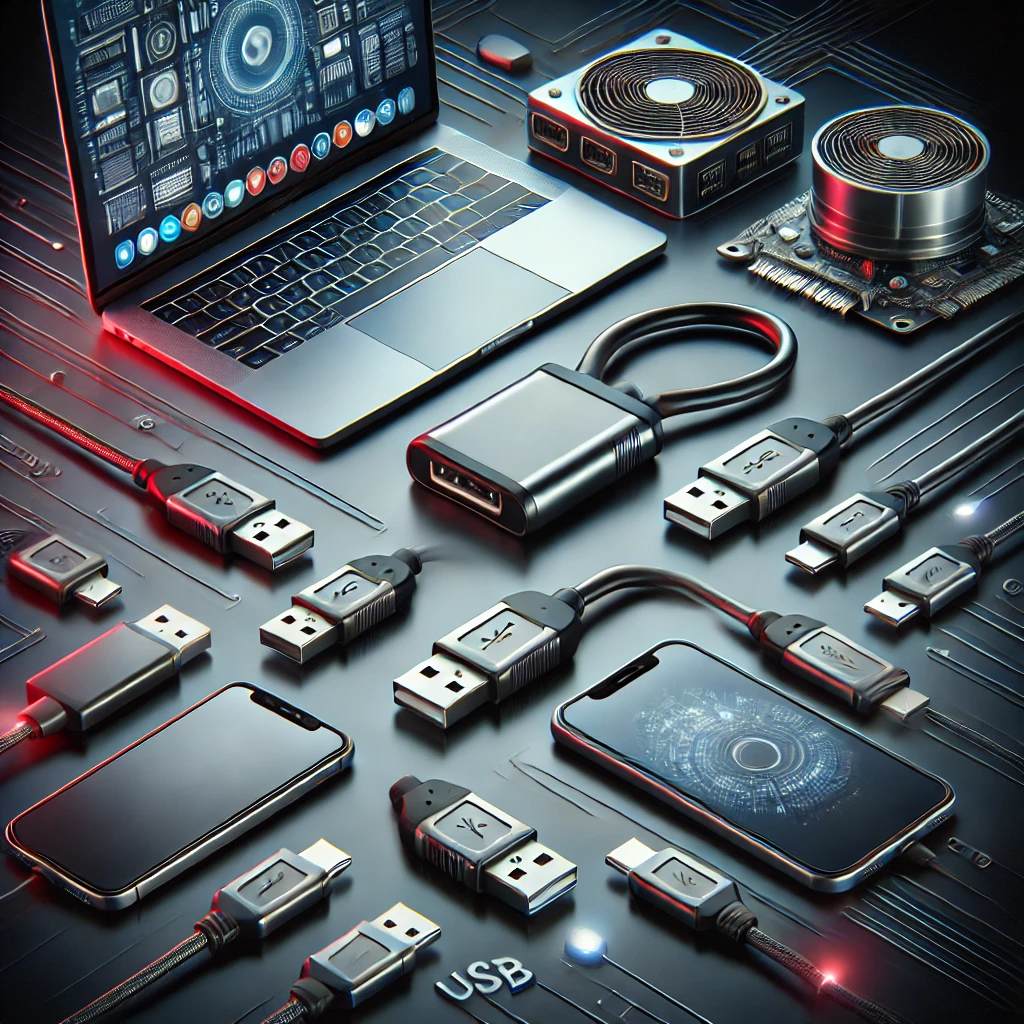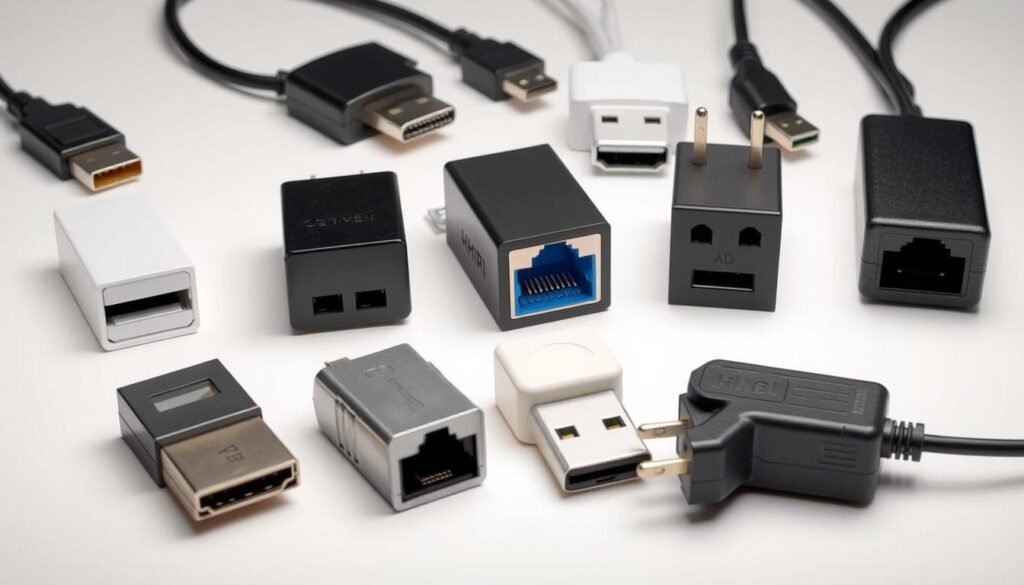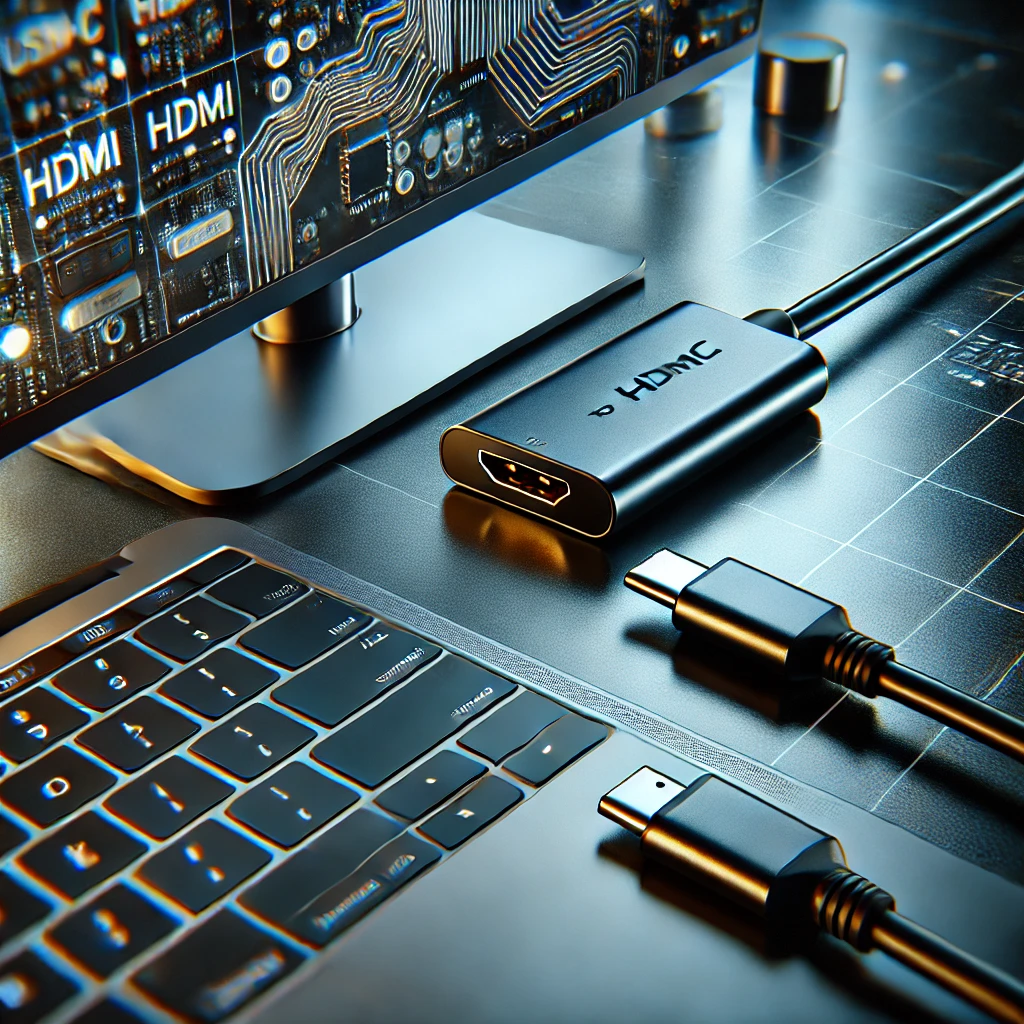A SATA to USB adapter is a simple yet powerful tool that allows you to connect SATA devices, like hard drives or solid-state drives (SSDs), to your computer through a USB port. This type of adapter is incredibly useful for data transfer, troubleshooting, or upgrading your storage devices. Whether you’re working on a DIY project, trying to recover data from an old hard drive, or simply need to access files from a different machine, a SATA to USB adapter is an essential tool to have.
In this guide, we’ll walk you through the basics of SATA to USB adapters, explaining how they work, when to use them, and how to make one yourself. We’ll also cover key materials, step-by-step instructions, and common mistakes to avoid in your DIY project.
What is SATA?
SATA (Serial Advanced Technology Attachment) is a high-speed interface used to connect storage devices such as hard drives (HDDs), solid-state drives (SSDs), and optical drives to a computer’s motherboard. Since its introduction in the early 2000s, SATA has largely replaced older parallel interfaces like IDE (Integrated Drive Electronics), providing faster data transfer rates, improved efficiency, and better cable management. It’s one of the most commonly used connection types for storage devices in both personal computers and enterprise environments.
Key Features of SATA:
- Serial Transmission: Unlike its predecessor, IDE, which used parallel transmission (sending multiple data bits simultaneously), SATA uses serial transmission, sending data one bit at a time but at much higher speeds. This allows for faster data transfer and reduced cable clutter.
- Improved Data Speeds: SATA has evolved through multiple versions to increase data transfer speeds. The original SATA I version supported 1.5 Gbps, while later versions such as SATA II (3 Gbps) and SATA III (6 Gbps) provide even faster performance. Modern drives that use SATA III can transfer large files much quicker, making them suitable for applications ranging from gaming to professional video editing.
- Hot Swapping: SATA devices support hot swapping, meaning they can be plugged in or unplugged while the computer is running without the risk of damaging the hardware. This feature is especially useful when you need to connect or disconnect external drives quickly.
The Evolution of SATA
SATA has gone through several generations, improving upon the performance of each previous iteration:
- SATA I (1.5 Gbps): The first generation, offering a significant performance boost over IDE, with data transfer speeds of up to 1.5 Gbps.
- SATA II (3 Gbps): Double the speed of SATA I, enabling faster performance for hard drives and SSDs.
- SATA III (6 Gbps): The most current generation, supporting up to 6 Gbps. SATA III is typically found in most modern computers, allowing for optimal performance with SSDs and high-performance HDDs.
In addition to these, newer versions of SATA Express and M.2 (which also uses the SATA protocol) are used for even faster data transfer in some laptop and desktop setups.
Why is SATA Important?
- Cost-Effective and Reliable: SATA technology is an affordable and reliable solution for connecting storage devices. It’s commonly used in desktop computers, laptops, and external hard drives.
- Better Power Efficiency: Compared to its predecessors, SATA has improved power efficiency, especially with the introduction of SATA III, which reduces power consumption for mobile devices such as laptops and ultrabooks.
- Future-Proofing: While SATA technology is not the fastest interface available today (with PCIe-based M.2 and NVMe drives surpassing its speeds), SATA is still widely used for budget-conscious builds and storage expansion. It offers a great balance of performance and affordability, making it ideal for people upgrading from older systems or those needing reliable storage on a budget.
SATA and Its Relationship to USB and Other Connections
SATA’s main strength is its ability to connect internal storage devices directly to the motherboard, but with the rise of external devices, SATA to USB adapters have become popular. These adapters allow you to connect a SATA device, such as a hard drive or SSD, to a USB port on your computer, enabling data transfer, backup, or simple access to external storage.
SATA is also used in other forms of data connection, such as eSATA (External SATA) for connecting external hard drives. However, as newer, faster protocols like USB 3.0, USB 3.1, and Thunderbolt have taken center stage for external storage, SATA connections are more commonly found in internal storage devices.
Common Devices That Use SATA
- Hard Drives (HDDs): Traditional spinning disk hard drives that use the SATA interface for connecting to the motherboard or external adapters.
- Solid-State Drives (SSDs): A newer generation of storage that is much faster than HDDs, available in SATA form (2.5-inch SSDs) or newer form factors like M.2.
- Optical Drives: CD, DVD, and Blu-ray drives that connect to the computer using SATA cables.
While newer SSDs have embraced faster connections like NVMe via the PCIe interface, SATA SSDs still offer good performance for those who need an upgrade from traditional hard drives without breaking the bank.
What is USB?
USB (Universal Serial Bus) is one of the most widely used standards for connecting peripherals, transferring data, and supplying power across a range of electronic devices. Since its introduction in the 1990s, USB has become the go-to method for connecting everything from computers and smartphones to printers, cameras, keyboards, and external storage devices. Whether you’re charging your phone, transferring data between a computer and an external drive, or connecting a keyboard to your laptop, USB is the protocol making it all possible.
USB Versions: Evolution Over Time
USB has undergone significant improvements since its inception, with each new version offering enhanced speeds, power delivery capabilities, and overall functionality. Here’s a breakdown of the most important USB versions:
- USB 1.0 & 1.1 (Low Speed & Full Speed): Released in the mid-1990s, these early versions of USB offered speeds up to 12 Mbps and were mainly used for connecting devices like keyboards, mice, and printers.
- USB 2.0 (High Speed): Introduced in 2000, USB 2.0 was a significant upgrade, offering data transfer speeds of up to 480 Mbps. It became the standard for most devices, including external hard drives and printers, and is still widely used today, though newer standards have surpassed it in speed.
- USB 3.0 & USB 3.1 (SuperSpeed): USB 3.0 debuted in 2008 with speeds up to 5 Gbps, while USB 3.1 (introduced in 2013) upped the ante to 10 Gbps. These versions provided a major performance boost, making them ideal for tasks like video editing, high-speed data backups, and faster peripheral connections.
- USB 3.2 & USB4: The latest versions, with speeds of 20 Gbps (USB 3.2) and up to 40 Gbps (USB4), represent a major leap forward. USB4 integrates Thunderbolt 3 compatibility, which is used for high-performance tasks such as gaming, 4K/8K video transfer, and quick data synchronization.
Types of USB Connectors
USB is not just a single type of connector; it has multiple variants to meet the diverse needs of users. Over time, new connector types have been introduced to accommodate changes in technology.
- USB-A: The most common and recognizable connector, USB-A is the standard rectangular port that you find on almost every computer and peripheral. Despite its widespread use, USB-A is now gradually being replaced by newer connectors due to its size and limitations in data transfer speed.
- USB-B: Primarily used for printers, scanners, and some external drives, USB-B connectors are larger and square-shaped. They are often seen in office environments.
- Mini and Micro USB: Smaller connectors introduced to reduce the physical space needed in smaller devices like smartphones, cameras, and tablets. The Micro-USB connector is now less common, as it has been replaced by USB-C on most modern devices.
- USB-C: This reversible, small, and high-speed connector is becoming the new standard, providing faster data transfer speeds, higher power delivery, and greater versatility. USB-C is used for laptops, smartphones, tablets, monitors, and even power adapters, replacing older USB-A and Micro-USB connectors. It’s capable of transferring data, power, and even video signals.
How Does USB Work?
USB operates as a serial communication standard, which means it sends data one bit at a time over a single wire. The system includes a host device (like a computer or phone) and peripherals (like a printer or external hard drive). These devices are connected via a USB hub or directly via a USB port.
USB utilizes plug-and-play functionality, meaning that devices can be connected or disconnected without turning off the computer or device. This ease of use has made USB the dominant connection type for consumer electronics.
USB works through a master-slave relationship: The host device (e.g., a computer) controls the data flow, while the peripheral (e.g., a mouse or keyboard) responds to the host’s commands. This system is efficient for everything from charging small devices to transferring large files between a computer and a storage device.
USB Power Delivery: Charging Capabilities
One of the key features that make USB so versatile is its ability to deliver power. This capability has grown over time, particularly with the advent of USB-C and USB Power Delivery (PD).
- Basic Charging: Older USB versions like USB 2.0 and USB 3.0 could provide 5V at 500mA for charging devices like phones or powering small peripherals.
- USB Power Delivery: The introduction of USB-C and USB PD has expanded charging capabilities, allowing for higher voltage (up to 20V) and higher current (up to 5A). This means that devices like laptops, monitors, and even electric vehicles can be charged via USB-C. USB PD also allows for bidirectional power, meaning both devices can send and receive power, making charging more efficient.
Common USB Use Cases
USB has become a universal standard for connecting a wide variety of devices, making it an indispensable part of modern technology. Here are just a few examples of where USB is used:
- Data Transfer: USB is used to transfer data between devices such as computers, external hard drives, flash drives, and cameras. With USB 3.0 and newer, data transfer speeds are fast enough to handle large files, including 4K videos, high-resolution images, and backup data.
- Charging Devices: USB is now the primary method for charging devices such as smartphones, laptops, headphones, and wearables. USB PD has made it possible to charge high-power devices quickly and efficiently.
- Peripheral Connections: USB is used to connect mice, keyboards, printers, scanners, and other accessories. The wide availability of USB ports makes it easy to plug in devices across different platforms.
- Video Output: USB-C can even be used for video output to monitors and TVs, thanks to protocols like DisplayPort over USB-C or Thunderbolt 3, making it a versatile solution for professionals, gamers, and content creators.
Why is USB So Important?
USB has become the universal standard for connectivity across a wide range of devices, and its evolution shows no signs of slowing down. The ease of use, versatility, and continuous improvements in speed and power capabilities make USB the backbone of modern electronic communication.
As new versions continue to emerge, the utility of USB only increases, whether in terms of providing fast charging, high-speed data transfers, or even video output.
From data storage to charging devices and connecting peripherals, USB’s role in daily life continues to grow, solidifying its place as one of the most critical innovations in the tech world.
USB and Its Future
As technology advances, USB-C is increasingly becoming the dominant connector due to its reversible design, faster speeds, and power delivery capabilities. In the future, we may see even faster data transfer rates, enhanced power output for charging high-power devices like laptops, and better integration with wireless technology to reduce the need for cables altogether.
USB4 and Beyond
The introduction of USB4 has already set the stage for the next leap in USB technology, offering data speeds up to 40Gbps and enhanced video support. With USB4’s growing adoption in laptops, smartphones, and other devices, the future of USB looks brighter and faster than ever.
How Does a SATA to USB Adapter Work?
A SATA to USB adapter functions as a bridge between the two interfaces: SATA and USB. The adapter converts the SATA interface used by the storage device into a USB signal that can be understood by your computer. This allows you to access the data on a SATA drive without needing to install it inside your computer.
The main steps the adapter takes include:
- Converting Data Signals: The SATA protocol is converted into USB protocol.
- Power Supply: Since SATA drives typically require more power than USB ports can provide, many SATA to USB adapters come with an additional power supply (either through an external power brick or a USB cable with a power connector) to ensure the drive gets the power it needs.
- Plug-and-Play Functionality: Once connected, the computer automatically detects the drive, allowing you to access it like any other external storage device.
Why Use a SATA to USB Adapter?
There are several reasons why you might need a SATA to USB adapter:
- Data Recovery: If you have an old laptop or desktop with a failed motherboard or broken SATA port, you can still retrieve data by connecting the SATA drive to a working computer using a USB port.
- External Storage: If you have an unused internal hard drive or SSD, you can turn it into an external drive with just a SATA to USB adapter. This is a cheap and easy way to increase your external storage capacity.
- Upgrading Storage: When upgrading your computer’s internal drive, you can use the SATA to USB adapter to transfer data from the old drive to the new one.
- Testing Hard Drives: If you want to check or test the functionality of a hard drive outside the computer, a SATA to USB adapter is an excellent tool for making the process easy and quick.
DIY SATA to USB Adapter: Step-by-Step Guide
For those who are more hands-on and enjoy building their own gadgets, making a SATA to USB adapter can be a fun and rewarding project. Below are the materials and steps required for building your own DIY SATA to USB adapter.
Materials Needed:
- SATA to USB Adapter Cable Kit (Available online or at electronic stores)
- SATA Hard Drive or SSD
- USB Cable (USB-A or USB-C, depending on your device)
- Soldering Iron (Optional) – Depending on your kit, you may need to solder connectors.
- Heat Shrink Tubing (Optional) – For insulating wires.
Steps:
- Prepare the Materials: Gather your SATA drive, USB cable, and the SATA to USB adapter kit. Most kits will come with a pre-made USB connector that you can simply attach to the SATA drive.
- Connect the SATA Drive: Insert the SATA hard drive or SSD into the adapter’s SATA connector. Ensure that the connection is secure.
- Attach the USB Connector: Connect the USB side of the adapter to your USB cable. If your kit requires soldering, carefully solder the appropriate pins on the USB cable to the adapter’s PCB (printed circuit board).
- Power Connection: Some SATA drives may require an additional power supply. If your kit includes an extra power cable, connect the 12V or 5V power cable to the SATA adapter to power the drive.
- Test the Connection: Once everything is connected, plug the USB end of the adapter into your computer. Your computer should recognize the SATA drive as an external storage device. You can now access the drive and transfer files as needed.
Common Mistakes to Avoid
While building a SATA to USB adapter is relatively straightforward, there are a few common mistakes to watch out for:
- Incorrect Soldering: If you need to solder components, ensure you don’t accidentally create short circuits. Make sure all connections are solid and properly insulated.
- Using Incompatible Cables: Not all USB cables are created equal. Check that the USB cable you’re using is capable of handling the data transfer speeds required for your SATA drive (USB 3.0 is preferred for faster speeds).
- Not Providing Sufficient Power: Some SATA drives, particularly 3.5-inch hard drives, require an external power source. If you don’t supply adequate power, the drive won’t function correctly or may not power on at all.
- Overlooking USB Port Compatibility: Be aware of whether you’re using USB-A or USB-C. Ensure that the adapter you choose is compatible with the port on your computer or device.
Alternatives to DIY SATA to USB Adapters
If you prefer not to build your own, you can always purchase a pre-built SATA to USB adapter. These adapters come in various sizes and designs, with options for 2.5-inch, 3.5-inch, and SSDs. Many models also include additional power supplies for drives that need more power.
Some popular brands offer plug-and-play SATA to USB adapters, which simplify the process and are a great option for those who need an adapter quickly.
Final Thoughts on SATA to USB Adapter
A SATA to USB adapter is an incredibly useful tool for anyone working with hard drives or SSDs. Whether you’re building your own adapter as a DIY project, recovering data, or using it for external storage, it provides a simple solution for connecting a SATA device to a USB-equipped computer.
By following the steps in this guide, you can either build your own adapter or purchase a pre-made one that suits your needs. Regardless of the method you choose, understanding how SATA to USB adapters work and how to use them effectively will give you greater control over your storage devices and help you solve technical challenges with ease.



